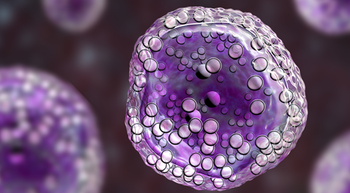
- November/December 2019
- Volume 13
- Issue 9
Medical Marijuana: Nurses's Knowledge Can Improve Patient Care
Medical cannabis use is legal in more than half of the United States. Nurses who are well educated on the topic can improve patient care.
It’s not unusual for Carey S. Clark, PhD, RN, AHN-BC, RYT associate professor of nursing, University of Maine in Augusta, to have a patient ask if medical cannabis, also known as medical marijuana, might alleviate the adverse events (AEs) of cancer treatment. Many patients have heard anecdotal stories about how cannabis has reduced nausea, anxiety, pain, insomnia, and loss of appetite and are curious as to whether the plant-derived substance might work for them. As of August 2019, 33 states plus Washington, DC, have legalized medical marijuana, and 11 states and the District of Columbia have made it legal to buy and consume recreational marijuana.1
“Nurses need to know the policies in their state concerning what patients can and cannot legally do around the use of medical cannabis,” says Clark, editor of the forthcoming Wolters- Kluwer Cannabis: A Handbook for Nurses.
In addition to her role as president of the American Cannabis Nurses Association, Clark has traveled across the country to help oncology nurses understand how they can best use cannabis as a palliative treatment, discuss cannabis ingestion and delivery methods, and note the proper dosage of cannabis for patients with cancer.
“With cannabis continuing to become legalized in more states across the country, there’s the need for oncology nurses to become familiar with the endocannabinoid system [ECS], the receptor system in the body that supports homeostasis and controls the central and peripheral nervous systems as well as energy uptake and immune responses,” Clark says.
“Patients have questions about medical cannabis use, and it’s important for nurses to have a working knowledge of the medical, legal, and pharmacological issues surrounding cannabis use.”
Although many oncology nurses and physicians are hungry for information on medical cannabis, the topic is traditionally never covered in nursing or medical school. The results of a University of Colorado Cancer Center study presented at the American Society of Clinical Oncology 2019 Annual Meeting show that while 73% of surveyed oncology providers believe medical marijuana provides benefits for patients with cancer, only 46% are comfortable recommending it. Major concerns included uncertain dosing, limited knowledge of available products and where to get them, and possible interactions with other medications.2
Regardless of whether a state has approved cannabis for medical use, Clark says research shows that patients are turning to medical cannabis for help with chronic pain, depression, posttraumatic stress disorder, anxiety, spasticity among patients with multiple sclerosis, alleviating AEs of chemotherapy, and more.
BATTLING THE STIGMA
Despite medical cannabis becoming more mainstream, Clark says a stigma still exists in many states and medical settings around its use. Some view medical cannabis as being in the same class of drugs as crack cocaine, while others remember “Reefer Madness,” the propaganda film that portrayed marijuana as a forbidden drug that might lead to psychosis and violence.
“There’s a lot of misinformation and fear that surround cannabis usage, and this makes it uncomfortable for many patients to discuss the topic with their provider,” Clark says.
A 2017 survey found that when patients aren’t able to obtain information about medical cannabis from their provider, they often turn to less-credible sources. The survey taken at a comprehensive cancer center in a state with legalized and recreational marijuana use found that although all patients preferred getting cannabis information from their provider, only 15% received that information. The majority obtained information from friends, newspaper/magazine articles, websites/blogs, or other patients.3
“Nurses need to help end the stigma surrounding medical cannabis by supporting patients and being nonjudgmental, compassionate, and patient centered,” Clark says.
She cites how in July 2018 the National Council of State Boards of Nursing (NCSBN) published the NCSBN National Nursing Guidelines for Medical Marijuana, which outline principles of essential nursing knowledge as they relate to medical cannabis. They include a working knowledge of the current state of legislation of medical and recreational cannabis use, an understanding of the ECS, knowledge of safety issues related to cannabis use, and approaching patients without judgment regarding their treatment choices.4
THE EVOLUTION OF MEDICAL CANNABIS
With the field of medical cannabis rapidly evolving, Judith Paice, PhD, RN, director of the Cancer Pain Program in the Division of Hematology-Oncology at Northwestern University Feinberg School of Medicine in Chicago, Illinois, encourages nurses to learn as much as they can. This knowledge, she says, will empower them to help patients make informed treatment decisions and determine if there are any drug interactions from other medications. It will also prepare nurses for other cannabinoid-based medicines that are currently being researched.
“In 2018, the Food and Drug Administration [FDA] approved Epidiolex [cannabidiol] for 2 types of epileptic seizures,” Paice says. “This might pave the way for patients to have access to more FDA-approved cannabis-derived drugs in the future.”
While interest in cannabis as a potential medication has increased, Paice says data are still lacking. “Cannabis research is rarely funded, but we’re starting to see more as researchers begin to look at whether medical cannabis can replace opioids or reduce opioid dependence or overdose,” she says.
In August 2019, Colorado became the third state, after New York and Illinois, to allow doctors to recommend medical marijuana for any condition for which they would prescribe an opioid. In addition, in Pennsylvania and New Jersey, patients with diagnosed opioid use disorder may be advised to use medical marijuana instead of opioids. The results of several studies show that cannabis use can lower opioid use in certain cases, but more research needs to be done in this area.5
“Patients should be able to feel comfortable talking to their oncology doctors and nurses about cannabis as a potential treatment,” Paice says. “Even if we don’t have all of the answers, it’s important to keep an open mind and an open dialogue.”
Paice says it’s also important for nurses to know the different routes of administration for cannabis: oral, topical, and inhalation. Cannabis plant material can be smoked, vaped, ingested raw, or incorporated into edibles or beverages. Extracted cannabis oils can also be used topically and applied under the tongue. In addition, nurses need to learn the difference between tetrahydrocannabinol (THC), and the less-intoxicating cannabidiol (CBD).
Although THC and CBD are derived from the cannabis plant, THC is a psychoactive component that provides a “high” while CBD is a nonpsychoactive component that reduces inflammation. For this reason, Clark recommends that nurses advise patients using THC to “start low and go slow” with gradual increases until they reach a dosage that is controlling their symptoms.
“Having knowledge of medical cannabis can help nurses with patient education and coaching and help them to clarify their goals for medical use,” Clark says. “If a patient used marijuana recreationally in the past and had a negative experience, they may be cautious about trying cannabis again, but nurses can explain how to use it safely as a palliative tool without getting the feeling of being high.”
References
- DISA Global Solutions. Map of marijuana legality by state. DISA website. disa.com/map-of-marijuana-legality-by-state. Updated 2019. Accessed August 2019.
- Glode AE, Wright GC, Leong S. Evolution of Colorado oncology providers on the use of medical marijuana. J Clin Oncol. 2019;37(suppl 15):10511. ascopubs.org/doi/abs/10.1200/JCO.2019.37.15_suppl.10511.
- Perfam SA, Woodfield MC, Lee CM, et al. Cannabis use among patients at a comprehensive cancer center in a state with legalized medicinal and recreation use. Cancer. 2017;123(22):4488-4497. doi: 10.1002/cncr.30879.
- Russell K, Cahill M, Gowen K, et al. The NCSBN National Nursing Guidelines for Medical Marijuana. J Nurs Regul. 2018;9(2; suppl). ncsbn.org/The_NCSBN_National_Nursing_Guidelines_for_Medical_Marijuana_JNR_July_2018.pdf
- Bachhuber M, Arnsten JH, Wurm G. Use of cannabis to relieve pain and promote sleep by customers at an adult use dispensary [published online July 2, 2019]. J Psychoactive Drugs. doi: 10.1080/02791072.2019.1626953.
Articles in this issue
almost 6 years ago
Oncology Nurses Must Keep Up-to-Date to Deliver the Best Carealmost 6 years ago
Improving Compassion Satisfaction Amid a Nursing Shortagealmost 6 years ago
Vaping Presents an Old Danger to a New Generationalmost 6 years ago
Helping Your Patients Understand and Prevent Gynecologic Cancers

















































































